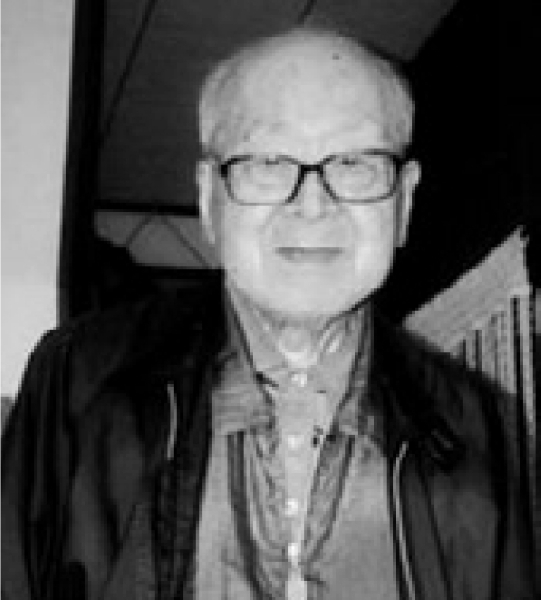 Mamoru Okada Sensei (岡田主), 1921-2014
Mamoru Okada Sensei (岡田主), 1921-2014
This is another of a type of essay that I really enjoy reading – memories of meeting and training with Aikido Founder Morihei Ueshiba from the perspective of ordinary students. In this essay Mamoru Okada recounts his memories of meeting Morihei Ueshiba in Osaka in 1949, after seeing him at a public demonstration held for members of the Nishi Health System. Interestingly, it appears that the Founder was already making regular trips to the Kansai area at that time.
Okada Sensei would go on to establish the Aikido Nobi Dojo (合気道野比道場) in Yokosuka in August 1980, and passed away in 2014 – a seventh dan in the Aikikai.
If you enjoy this type of essay you may also enjoy “Mr. Kimura’s Aikido Memories” (Part 1 |Part 2) – which presents memories of training with Morihei Ueshiba at the pre-war Kobukan Dojo in 1942, and “Aikido and Me – Training with Aikido Founder Morihei Ueshiba” – which presents memories of training with Morihei Ueshiba in Osaka in the 1960’s.
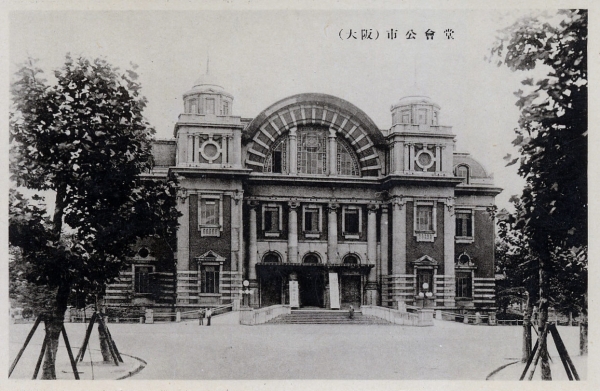 Osaka Central Public Hall, 1951
Osaka Central Public Hall, 1951
Mamoru Okada – Me and Aikido
– Translated by Christopher Li
The first time that I saw a demonstration by Aikido Founder Morihei Ueshiba Sensei was in March of Showa year 24 (1949), at a lecture held by the Nishi Health System (西式健康法) at the Osaka Central Public Hall (大阪中之島中央公会堂).
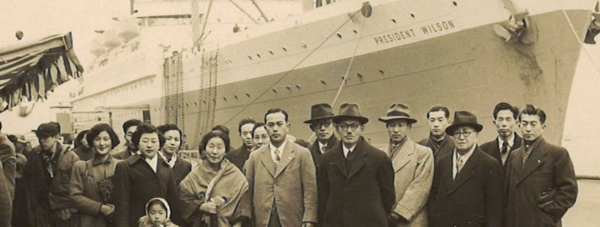 Koichi Tohei on his way to Hawaii in 1953
Koichi Tohei on his way to Hawaii in 1953
Translator’s Note: Katsuzo Nishi created a series of exercises in 1927 that he named the “Nishi Health System”. He was also a student of Aikido Founder Morihei Ueshiba, who adopted some of those exercises into his warm-up exercise routines. The Nishikai (the organization formed around the Nishi Health System) was instrumental in inviting Koichi Tohei to Hawaii in 1953.
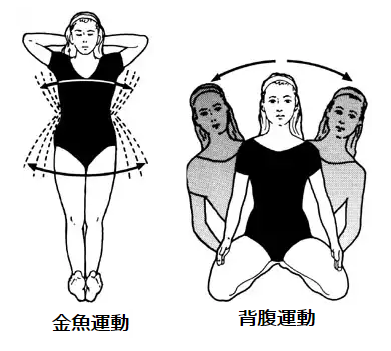 Two of the Nishi Health System exercises
Two of the Nishi Health System exercises
Kingyo Undo (“goldfish exercise”) and Hifuku Undo (“dorsal-ventral exercise”)
That day, after the regular lecture by Katsuzo Nishi Sensei (the founder of the Nishi Health System), there was a special demonstration by Morihei Ueshiba Sensei, so that the members of the Nishikai would be able to see his exquisite skills in Aikido for themselves.
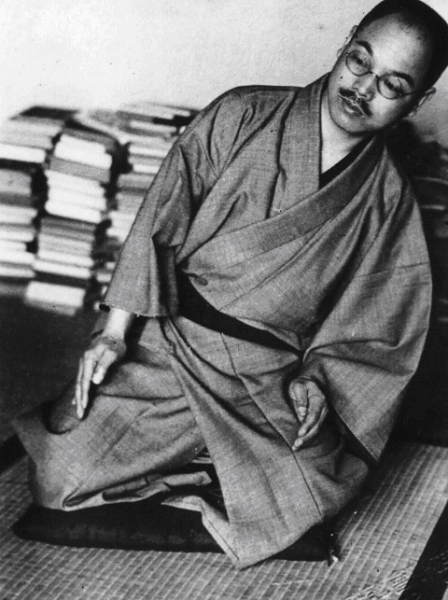 Katsuzo Nishi demonstrates the “Hifuku Undo” (背腹運動) exercise
Katsuzo Nishi demonstrates the “Hifuku Undo” (背腹運動) exercise
Nishi Sensei had a long friendship with the Founder, and was even on the board of directors for the Aikikai. I was twenty-seven years old and employed by Harima Dock Co., Ltd. (later to merge with Tokyo’s Ishikawa Heavy Industries and become the IHI Corporation) in Aioi City in Hyogo Prefecture. Influenced by my parents, I had admired Nishi Sensei since the time that I was a child, and that day we took about three and a half hours to come all the way from Aioi City to attend the lecture. During his lectures Nishi Sensei would often say “Aikido is surely true Budo, the movements of Morihei Ueshiba Sensei’s techniques can be likened to a tetrahedron composed of equilateral triangles, and the Nishi Health System has also incorporated the theoretical system of that structure, it is used on our association emblem. Compared to other structures, a tetrahedron composed of equilateral triangles provide the greatest level of strength for the smallest volume, and can be said to be the most efficient. I think that everybody should certainly experience Aikido at least once.” – and on that day he gave all of the members that chance.
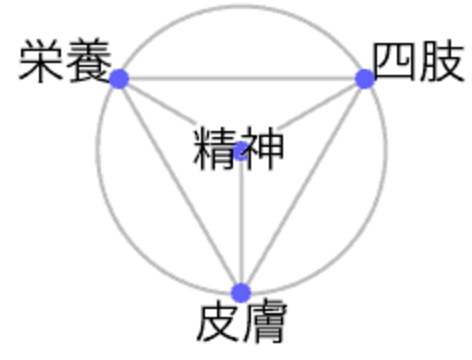 The Nishi Health System emblem and an explanation of
The Nishi Health System emblem and an explanation of
the four primary elements – nutrition, skin, mind (in the center) and limbs
I attended together with my parents, and I remember being deeply impressed to see the exquisite flow of the Founder’s techniques for the first time. At the demonstration it was announced that there would be a special training workshop held beginning the next day at the Sonezaki Police Station in Umeda in Osaka, so the three of us decided to participate. There were many participants at the workshop, which was held over the period of a week, and the Founder instructed even us beginners with kindness.
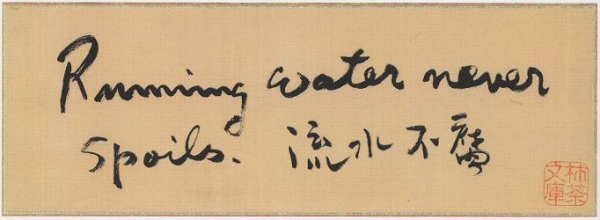 “Running water never spoils”
“Running water never spoils”
Calligraphy by Nishi Health System Founder Katsuzo Nishi
We immediately applied to become students, and our names were entered into the student register that the Founder carried with him. He did this publicly as soon as we were accepted as students. At the time we also had a house in Rokko, in Kyoto City, and we traveled to training from there. When we returned home we practiced the shiho-nage technique that we had been taught that day with each other, repeating our training through trial and error.
My father came from a farming family and had a business selling seeds and seedlings. My mother was the daughter of a fishmonger and had graduated from a women’s teaching college, she was working as a teacher at an elementary school. I was an older child with no idea what it would be like to have siblings. From my childhood my mother would tell me tales of great heroes instead of fairy tales.
For example, Yamato Takeru (日本武尊), Minamoto no Yoshitsune (源 義経), Kusunoki Masashige (楠木 正成), Kimura Shigenari (木村重成), Sanada Yukimura (真田 幸村), Araki Mataemon (荒木又衛門), Toju Nakae (中江藤樹), Yoshida Shoin (吉田松陰), Sakamoto Ryoma (坂本龍馬), Saigo Takamori (西郷隆盛), and others. It might be thought that this is what germinated my yearning for the sword. Wanting to learn Kendo even one day sooner, when I was a fifth year student in elementary school I asked my mother to take me to ask advice from someone who worked at the same school where she was employed and excelled at Kendo. That teacher advised me “Your body hasn’t developed yet, and you still have to deal with your middle school entrance examinations, so it would be better for you to learn Kendo after you enter middle school.”. I felt deflated, but I waited impatiently until the day that I would become a middle school student.
Happily, in April of Showa year 9 (1934) I was able to enter Hyogo Prefectural Kobe Middle School #1. I was a fresh first year student, unused to the khaki colored uniforms and the white furoshiki that we used at the school, but I immediately went to visit the after-school Kendo dojo inside the school and applied to join. There were a number of sempai lined up around the entrance to the dojo, but I was permitted to join and became a member of the Kendo club. I was filled with happiness, and from then on I would train every day, plunging myself in a life dedicated to the sword.
Thank you for visiting the Aikido Sangenkai blog. You can show your appreciation and support the distribution of more free content by donating today!
Thanks,
Chris
In Showa year 14 (1939) I went to school at Kobe Kotoku Kogyo’s mechanical engineering department (now Kobe University’s engineering department), and at the end of Showa year 16 (1941) I received an accelerated graduation due to the outbreak of the war in the Pacific. In October of Showa year 17 (1942) I enlisted in the army, and until August of Showa year 20 (1945) I worked on the front line of domestic defense as an aviation mechanic.
After the war I entered Harima Dock Co., Ltd. of Aioi City in Hyogo Prefecture and returned to my life as a member of society.
When I was in middle school and vocational school I would sometimes travel for Kendo tournaments – the joy of victory and the teeth-grinding agony of defeat were both repeated uncounted times. After I entered the Harima Dock Co., Ltd. I joined the Kendo club, and traveled to tournaments and participated in company competitions. In November of Showa year 16 (1941), before graduating from Kobe Kotoku Kogyo, I received a san-dan certificate from the Dai Nippon Butokukai (大日本武徳会), and after the war I received go-dan in April of Showa year 31 (1956) and then a Renshi certificate in December of Showa year (1959) from the All Japan Kendo Federation (大日本剣道連盟). So, I felt that I was able to realize a little bit of the dreams of the sword from my childhood.
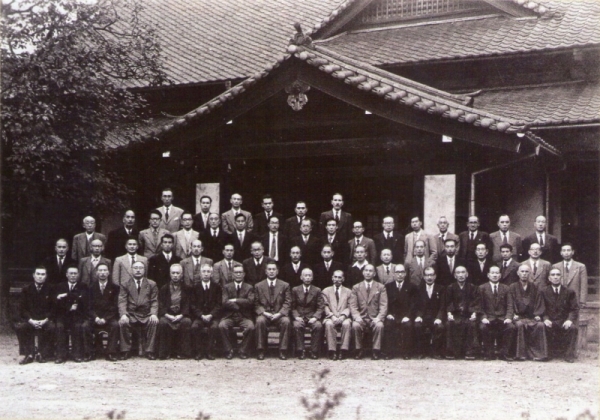 The Founding of the All Japan Kendo Federation, 1952
The Founding of the All Japan Kendo Federation, 1952
Morihei Ueshiba’s close friend Nakayama Hakudo, center-right
However, I cannot doubt that being able to meet Aikido Founder Morihei Ueshiba was a turning point in my path of the sword, and along with my contact with Katsuzo Nishi Sensei was the biggest turning point in my life.
At the time the Founder was living in the dojo in Iwama, in Ibaraki, or at the Hombu Dojo in Wakamatsu-cho, Shinjuku-ku, Tokyo. Every month, or every other month he would come to Kansai (Western Japan) for one or two weeks, and instruct workshops for the students there. I still hadn’t found a good place to train, so I trained intermittently by grasping those opportunities. There was a workshop held at the Nagata Police Station. I believe that the majority of the participants were teachers of the Nishi Health System or were Nishi Health System members. It was at this time that I met Aritomo Murashige Sensei (村重有利) and received instruction from him.
Translator’s Note: Aritomo Murashige (1895-1964) was a student of Morihei Ueshiba from around 1931, and also studied Judo with Jigoro Kano and Tenshin Shoden Katori Shinto-ryu along with Minoru Mochizuki. He was the first person to bring Aikido to Burma (Myanmar), in 1953, as part of the Japanese government’s program of compensation for their WWII occupation. Murashige Sensei was active during WWII – one person is known to have said “When one came near him it felt as if there was a rain of blood”.
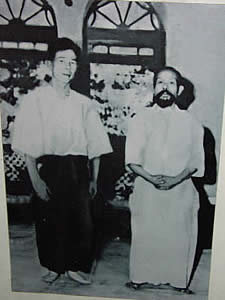 Seigo Yamaguchi (left) with Aritomo Murashige (right) in Myanmar
Seigo Yamaguchi (left) with Aritomo Murashige (right) in Myanmar
In between training sessions the Founder would speak about Omoto-kyo – before the war he went to China with Onisaburo Degushi Seishi (the Founder of Omoto-kyo), fought with mounted bandits and was arrested together. They were rescued miraculously at the last instant, just as they were ready to give up their lives – he made a great presentation to Murashige Sensei and the other students.
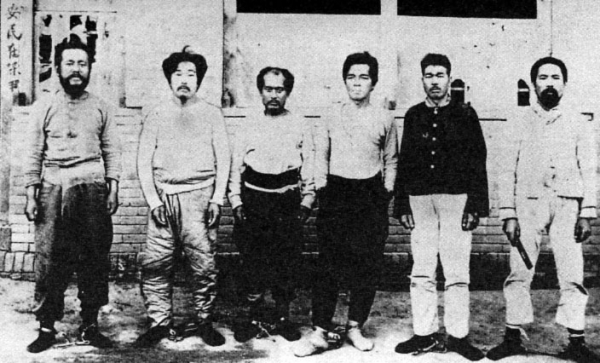 Under arrest in Mongolia
Under arrest in Mongolia
Onisaburo Deguchi (second from left) with Morihei Ueshiba (third from left)
Soon after that Murashige Sensei was sent to teach in Burma, and then I heard that he passed away in a traffic accident. It’s a sad thing. There was also training at the house of Mr. Ishimi in Osaka (the older brother of the current mayor of Himeji City), I think that there were about fifteen tatami mats, and I also participated in that training.
Also, I followed the Founder to Isaburo Tanaka (田中伊三郎 / also called 万川 / Bansen Tanaka) Sensei’s dojo in Suita City and was able to train a little there.
I’m sorry for talking about personal matters, but while my mother was a woman she was also extremely decisive, and she was overflowing with a desire to seek the truth. Throughout her entire life she followed that path, it wouldn’t be too much to say that she would learn from great personages whenever she encountered them, from the very beginning to the very end. In my mother’s later years she gave me five photographic portraits and told me to hang them up in the tatami room of my home. They were the Founder Ueshiba Sensei, Katsuzo Nishi Sensei, Hideo Sonobe (園部 秀雄) – the Soke of Jikishinkage-ryu Naginata (a woman) , Masataro Sawayanagi (澤柳政太郎 – the former president of Kyoto University), and one more person – the Jodo Shinshu follower Shiro Tsuyama (津山四郎). Since then, in our home every morning and evening our entire family sits in front of the altar and, after praying to the Buddhas, pays their respects to the photographs of those five great personages.
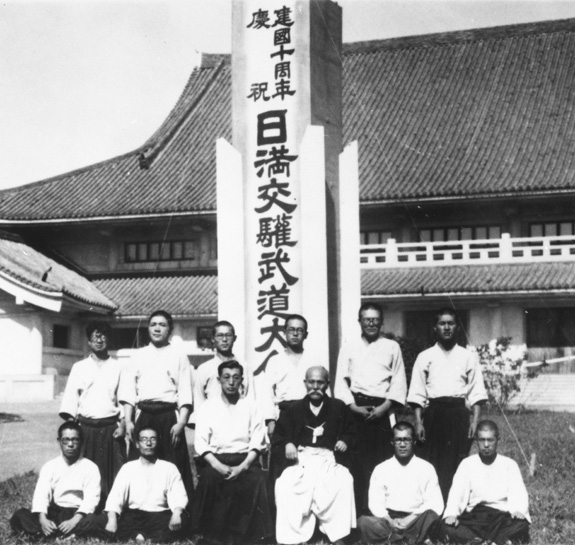
In front of the Shinbuden Dojo
at Kenkoku Daigaku in Manchukuo (occupied Manchuria)
Kenji Tomiki and Morihei Ueshiba center,
Hideo Ohba in back row – second from left
Shigenobu Okumura in back row – second from right
Translator’s Note: It was Hideo Sonobe who commented on Morihei Ueshiba’s famous demonstration in 1939 with Hideo Ohba in Manchuria. Here is the story as told by Fumiaki Shishida (a student of Kenji Tomiki and a professor at Waseda University) in Ohba’s biography
It was Hideo Ohba who took ukemi for Ueshiba for the demonstration. He later talked about this event as follows: “Since the Emperor of Manchuria was in an exalted position at that time like the Emperor of Japan, I thought I should not take ukemi for Ueshiba in the way I usually did. If Ueshiba Sensei were a true master, he could freely handle a true punch, thrust or grab. Therefore, I decided to attack him seriously. When we stood on the platform, I saw many martial arts masters present in the large dojo of the Shimbuden. When I glanced at Ueshiba Sensei, his beard was sticking out towards me, his hair was standing on end and his eyes were glittering. I thought to myself that he was indeed a true master. Then I concentrated on taking ukemi for him, thinking how different it was to face a master. After the demonstration, we bowed and sat in the corner of the dojo and were supposed to walk over to the seats where the masters were sitting. However, I heard someone thunder, ‘You idiot!’ Ueshiba Sensei was short-tempered. He couldn’t wait until we returned to our seats. He shouted at me in that way in front of everyone. Until then, I thought he was a wonderful and truly great master, but his shout made my spirit pop like a bubble. We sat down. Ueshiba Sensei didn’t even smile. He was in a bad mood. So I felt tiny. Who do you think showed up then? It was Hideo Sonobe who was said to be without peer in Japan or anywhere in the use of the Naginata. She came all the way up to where the masters were sitting while Iai and Naginata kata were being demonstrated one after another. She said, ‘Mr. Ueshiba I have never seen more wonderful techniques than what you showed today. They were fantastic!’ Ueshiba Sensei, who had been in a bad mood, asked her what part she liked. He asked me to find a place where they could talk and we all went down to the basement of the Shimbuden and they discussed the theory of martial arts for two hours. While I was listening to their discussion Ueshiba Sensei asked her what she liked and she replied that she liked the ‘connections’ (tsunagari) between techniques. However, I didn’t understand these connections. I understood that the Dai Nihon Butokukai [Kyoto-based organization which governed Japanese martial arts] then was having a hard time trying to decide who they should choose as the best swordsman of that year and had asked Sonobe Sensei for her opinion. When I heard Sonobe Sensei tell Ueshiba Sensei that she had never seen such wonderful techniques even though she had seen him demonstrate often, I decided to learn Naginata in order to search for these ‘connections.’”
Hideo would always recount this story to his students when he was in a good mood. One time I asked him the following question, “Sensei, when you attacked Ueshiba Sensei seriously, could he execute techniques like he usually did in his regular demonstrations?” Judging from the fact that he was scolded on that occasion, the answer was obvious. I asked this question because I wanted to confirm it. He answered, “Ueshiba sensei seemed to have a hard time executing techniques smoothly.”
I think that Tomiki sensei was critical of the fact that Ueshiba’s demonstrations became gradually softer. Tomiki’s belief was that such softness was a way of making the person throwing look good, and was different from how martial arts should be. This demonstration of Ueshiba and Ohba received the highest praise from a top martial artist because of Ohba’s serious attacks, and the fact that he refused to participate in a prearranged performance the way he normally would have. I think that behind this fact lies an important hint as to what aikido should be. There seem to be some people within the Japan Aikido Association who see that their kata demonstrations are different from the flowing demonstrations of other schools, and try to change them in that direction. However, things should be the opposite. I think what is important is that we should master each technique perfectly as did Ueshiba Sensei, and then try to achieve a connection or flow between techniques. Hideo’s experience taught us not only the limitation of Ueshiba’s techniques (one cannot throw someone in a dance-like manner), as well as his incredible mastery, but also how a demonstration should be.
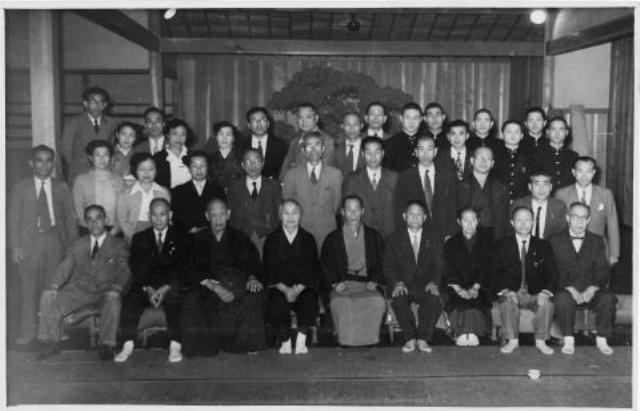 Hideo Sonobe (sixth from right) at the Kobukan (光武館) Dojo around 1954
Hideo Sonobe (sixth from right) at the Kobukan (光武館) Dojo around 1954
When she had the chance during a workshop at the Sonezaki Police Station my mother invited the Founder to visit us in Aioi City. This wasn’t something that any of us could have thought of, much less have been able to do. But the Founder consented and it came to pass. I think that it was around October of Showa year 24 (1949). We used the banquet hall of the Aioi Credit Union (相生信用組合) to gather Judo students and other people who were interested to view a demonstration by the Founder. As otomo (“attendants”) the Founder brought with him Tadashi Abe Sensei (阿部 正), who would later go to France as an instructor, Nariaki Hirano Sensei (平野成秋) from Tanabe City, and Mr. Oyama, who came from boxing (Translator’s Note: This may be Kunio Oyama, from Iwama.). Abe Sensei took ukemi for the demonstration. Thus it was that the light of Aiki shone even in the shipbuilding city of Aioi. We were especially grateful that the Founder stayed with us in our home while he was in Aioi.
When I think of all of our carelessness back then I feel ashamed. We served him a humble meal, which he ate cheerfully, and then after a short chat he introduced our family to the basics of suwari-waza shomenuchi ikkyo. He stayed with us for the night and the next day, after taking the time to watch us clear the fields and cultivate the land of our mountain farmland, he returned to Tokyo in the afternoon.
Later on around Showa year 33 (1958), during a trip to Kansai, the Founder stopped by my home. His otomo at the time were Nobuyoshi Tamura Shihan (田村信喜), who would spend many years teaching in France, and Seiichi Sugano Shihan (菅野誠一) who teaches in New York.
On that occurance he was only able to stay for a short time, so I believe that we served him lunch. I think that this was the time that the Founder said “Let me write something for you.”, and wrote “Masakatsu, Agatsu, Katsuhayahi, Takemusu Aiki, Tsunemori” (正勝、吾勝、勝速日、武産合気、常盛) for me on a piece of calligraphy paper. Aside from the name “Morihei”, the Founder would also use the name “Tsunemori” (常盛).
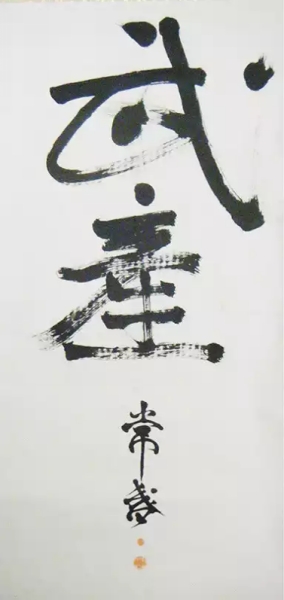 “Takemusu” calligraphy by Aikido Founder Morihei Ueshiba
“Takemusu” calligraphy by Aikido Founder Morihei Ueshiba
signed “Tsunemori”
I framed that calligraphy paper, and now it hangs in my Aikido Nobi Dojo. I hope that I can impress on my children that this is a family treasure of our household. We were honored that he would come to stay twice at the home of rank beginners. I often reflect deeply on the warm feelings of the Founder and I must continue to impress this on my children.
I, who had begun to burn with a passion for Aikido, somehow managed to get by until that one day in the summer of Showa year 24 (1949) when I went to visit the Founder in Iwama for the first time.
The Founder came to greet me cheerfully. It was also the first time that I had met his wife. I visited the Aiki Shrine and was able to hear the voice of the Founder as he prayed. After that he permitted me to join the training.
At that time Morihiro Saito Sensei (斉藤守弘) was serving as an uchi-deshi, and I also asked Saito Sensei for instruction. I was still a beginner, so I was completely absorbed. I believe that the dojo had a wooden floor. After being kindly entertained in the evening I stayed there for the night.
Early the next morning, after the Founder greeted the sun respectfully, we visited the Aiki Shrine, where we heard the Norito (“shinto prayers”) rising resonantly – it was an extremely refreshing feeling. If you could excuse me, many years have passed and some of the details have become fuzzy, so some of the details might be mistaken. I am trying to give you an outline of what it was really like, so please be forgiving.
So, that day the Founder was scheduled to go to Aikikai Hombu Dojo, so I accompanied him as his otomo. It was still not long after the war and Hombu Dojo was an old fashioned wooden building. The dojo was divided into a number of small rooms, and it appeared that there were a number of families living there. It was the first time that I met Ni-Dai Doshu Kisshomaru Ueshiba and his wife. I left Hombu Dojo that day after receiving much generous hospitality.
After that my mother also became enthusiastic about visiting the Iwama Dojo, so she took off for Iwama Village in Ibaragi Prefecture on her own from Aioi City in Hyogo Prefecture. When she transferred to the Joban Line at Ueno Station she saw a young person in a car and asked them the way to Iwama. Miraculously, that young person was training Aikido in Iwama at that time – his name was Mr. Yoshitomo Machida (町田良友), and he lived in Iwama at the time. Mr. Machida told my mother that he was training in Aikido, and took her to the Aikido dojo in Iwama so that my mother was able to meet the Founder and his wife there.
The meeting of Mr. Machida and my mother was certainly unexpected. My mother completed her journey to Iwama and returned home without incident. After telling us about her trip she told us something that the Founder had said – “It seems that you son is pursuing the path of Aiki with enthusiasm, if you leave him with me I can develop him into a professional.”, was the gist of it, I believe. My spirit was moved, but I had already followed the path of a mechanical technician and I had a responsibility to protect the livelihood of my family, so I couldn’t make such a bold decision and was unable to take advantage of the Founder’s kindness.
Mr. Machida was a university student at the time, and my mother asked him to help with some projects related the the Nishi Health System. As a result, he came to Kansai just for that and I was able to meet him face to face for the first time. Mr. Machida gave us a great deal of assistance during that time and we have remained friendly to this day.
Published in the Kobe University Technical Club (KTC) newsletter issue 72, March 1st 2011
Published by: Christopher Li – Honolulu, HI


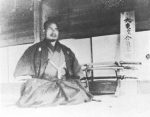
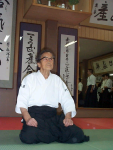

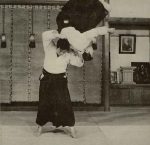

Leave a Reply